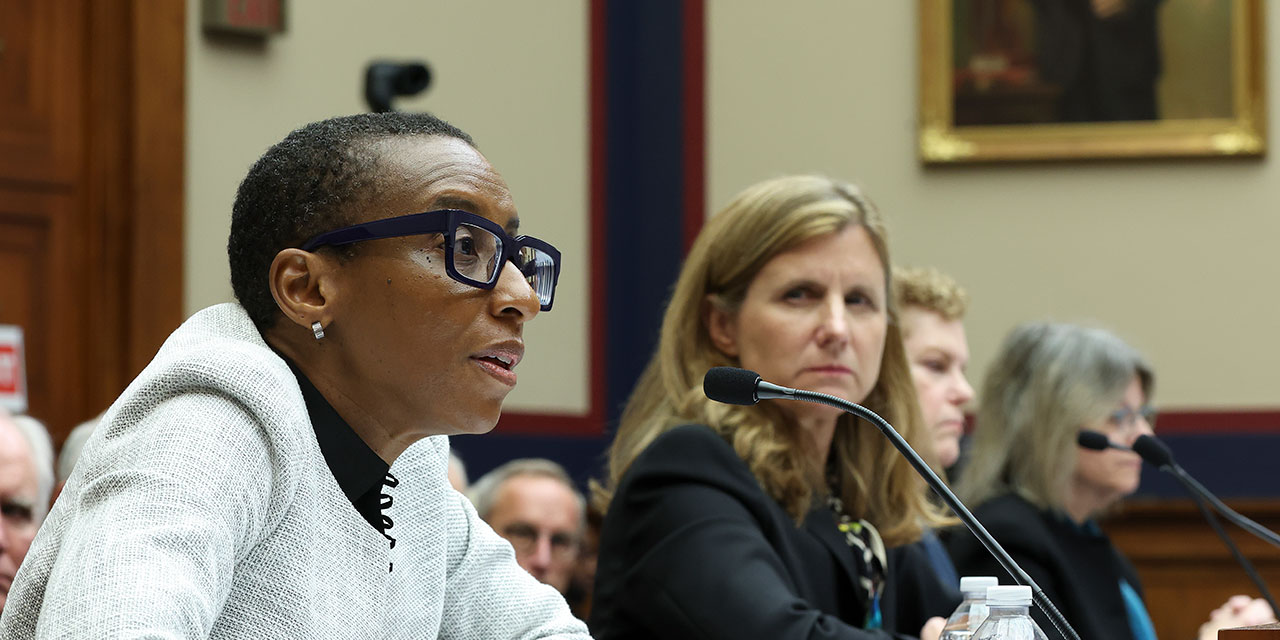Schools training the nation’s future physicians are incorporating climate change into courses, preparing students for challenges posed by the planet’s shifting patterns.
Hugh Shirley recalls that much of the talk about the effects of climate change he heard during his first year at Harvard Medical School came within the context of broader discussions about social justice and racial inequities.
“We discussed the intersection of racism and environmental justice and how it affects patient exposure to things like air pollution,” Shirley says. Though limited to that type of framework, he says learning about the complex interactions between racism and health – and how climate injustice relates to both – was eye-opening.
Now in his third year at medical school, Shirley says the framework for talking about climate change has grown. Thanks in part to a campaign he’s helped lead, he says there’s been a greater emphasis on incorporating information about the health effects of the problem into the clinical curriculum at Harvard, helping prepare students to combat the immediate and long-term health challenges posed by the planet’s shifting temperature and weather patterns.
“Now, as students are going through the first-year curriculum, they actually have longitudinal content that is integrated into the different basic science courses and medical science courses that helps explain better, in a more data-driven way, the relationship between climate and health,” says Shirley, co-leader of Students for Environmental Awareness in Medicine, an organization started at Harvard in 2005 with the goal of improving how medicine addresses the intersection of environmental issues and human health.
Harvard offers just one example of a growing effort at medical schools across the U.S. to incorporate more about climate change into their educational offerings. Data from the Association of American Medical Colleges shows that out of approximately 150 medical schools surveyed each year, the share with information about climate change included in either a required or an elective course grew from 27% in 2019-2020 to 55% by 2021-2022.
“In just two years we’ve seen over a doubling of the number of schools that are telling us that they are integrating topics that are related to the health effects of climate change within their curriculum,” says Lisa Howley, senior director of strategic initiatives and partnerships for the AAMC. “We don’t usually see that pace of increase or adoption in other areas – it’s really encouraging to see that so much progress has been made, although there is still more progress to be made.”
The move at Harvard to include more about climate change had been in the works for years, but the effort received a significant boost in January when the medical school’s Education Policy and Curriculum Committee voted to embed climate change and health into all four years of its regular clinical curriculum, says Dr. Gaurab Basu, director of education and policy at the Center for Climate, Health, and the Global Environment at Harvard’s T.H. Chan School of Public Health.
Basu is credited as a key figure in designing the climate change portion of the curriculum, and says integrating the theme is an ongoing collaborative process. He meets each month with students to review areas of the curriculum where they feel lessons about the health effects of climate change can be included, and then holds discussions with faculty experts and program directors aimed at developing courses.
The students “really get this issue,” Basu says. “They have real clarity that if I’m in a clinic or a hospital and taking care of a patient, but I’m not asking them bigger questions about environmental exposures, and about the impact of heat waves, air pollution and things like that, I’m not doing full service to my patients.”
Howley says recent years have made the need for medicine to take a more active role in mitigating the health effects of climate change increasingly apparent. Extreme weather events – such as record-setting heat that blistered parts of the country this past summer, along with hurricanes and wildfires – have become more frequent, severe or both in recent decades, leading to injuries and deaths. One recent study found that cardiovascular-related deaths tied to extreme heat would more than double in the coming decades amid an intermediate increase in greenhouse gas emissions.
Experts also fear climate change will fuel flooding and conditions such as cancer and respiratory illnesses in connection with factors like pollution and wildfires. Changing weather conditions additionally can exacerbate drought, impacting food supplies, and raise the risk of contracting vector-borne diseases like West Nile virus and malaria. The U.S. this year saw its first locally acquired cases of malaria in two decades.
“In this space, it’s a rapidly evolving area where increased knowledge leads to changes in practice, and then of course changes in education will follow as well,” Howley says.
Similar to moves at Harvard, efforts to include more about climate change in medical school training have been going on at the Duke University School of Medicine. In February, the school launched a new topic thread within its 10-month “Foundations of Patient Care” coursework for first-year students that discusses planetary health, environmental justice and the impact of climate change on physical and mental health.
Thread creators Dr. Jennifer Lawson, a clinical associate in the medical school’s Department of Pediatrics, and Andrew Muzyk, an associate professor of the practice of medical education, say there’s been a broader initiative at the school to make the curriculum more patient-centric. Muzyk says the thread in the foundations course recently included multiple lectures and two practical learning opportunities that involved students visiting exhibits that highlighted the real-world human toll of climate change.
“The root of the course is really all about bringing the community into the classroom and bringing the students into the community to think about what’s the impact on those individuals that they’ll be caring for, what’s the impact on those communities, and how do we all come together to have a discussion about what folks are experiencing,” Muzyk says.
A potential hurdle for schools implementing climate-focused shifts is doing so in a way that fits into an existing medical curriculum. Lawson, at Duke, says it’s a recurring “challenge in medical education not to overwhelm either the faculty or the students.”
“Sometimes the faculty have already got their lecture about kidney disease; what we need to do now is just weave in another sentence or bullet point about a connection with climate change,” Lawson says.
Indeed, Natalie Baker, a second-year medical student at Harvard and co-chair of advocacy for the national organization Medical Students for a Sustainable Future, says it’s key to offer examples that enrich existing content “instead of adding a ton of new information.”
“More than anything, it’s about just learning how to see the forest from the trees and think about environmental and occupational health in a way that’s productive and that can be adapted over time as these issues progress over time as well,” Baker says.
At Harvard, Basu says they worked to integrate climate change into students’ education during clinical rotations by first expanding upon an existing training module in which students learn how to assess a patient’s environmental history. Such training involves asking patients about where they live and work to get a better understanding of where they might be at risk of exposure to harmful environmental elements and to inform clinical decisions based on those assessments.
Basu says a second training module conceived by students involves use of a screening tool to help identify patients at high risk of heat exposure and provide them with counseling and resources. Rising temperatures have been an increasing public health concern, with extreme heat responsible for nearly 5,000 deaths in the U.S. from 2018 to 2021, according to a recent analysis by health research organization KFF.
“We wanted to be really active where they’re not just learning content, but actively integrating what they learn into the care of patients,” Basu says.
Efforts to apply such knowledge to patient care aren’t limited to medical school students. Heide Cygan – an associate professor in the Department of Community, Systems and Mental Health Nursing and co-director of the Advanced Public Health Nursing program at the Rush University College of Nursing in Chicago – says calls to include more about climate change in nursing courses there have been growing louder in recent years, driven in part by both students and school leaders.



